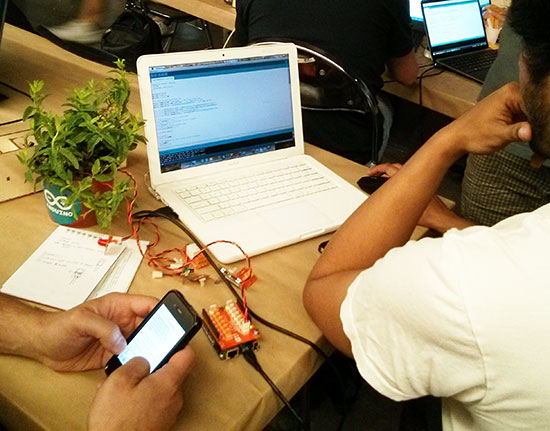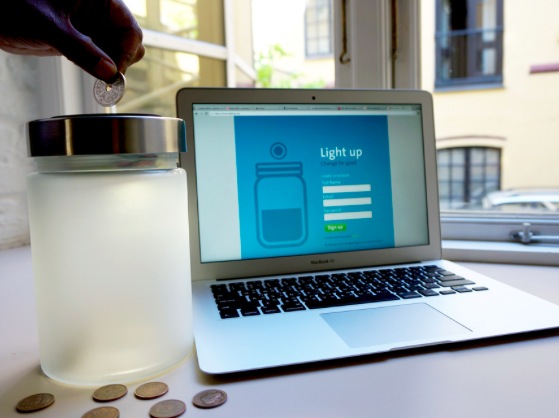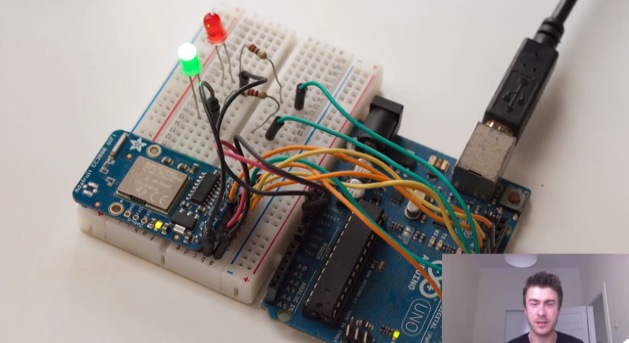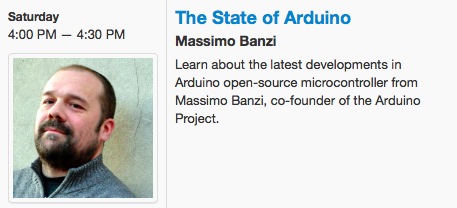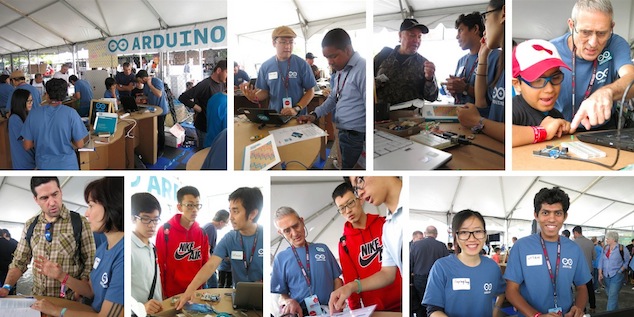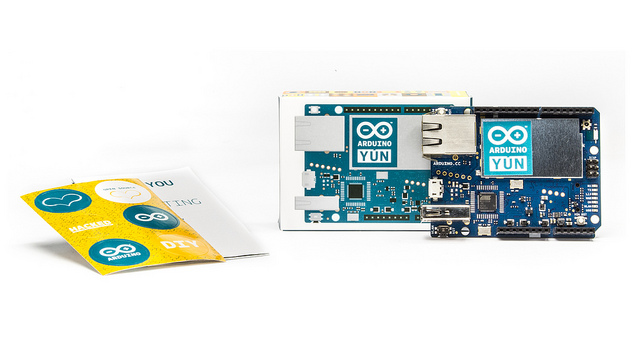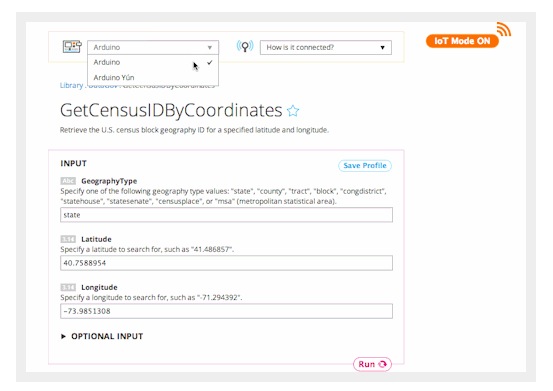
Our friends at Temboo are releasing more cool stuff for your Internet of Everything. Here’s some news from their blog.
———————————-
Now you can connect even more Arduinos with the power of Temboo by simply flipping our IoT Mode on. This new feature opens up a whole new world of possibilities for the Internet of Things.
What is IoT mode, you ask?
It’s a new way to access our 2,000+ Choreos on any of your Arduino or Arduino-compatible boards. By just hitting a switch at the top right of any Choreo page, you “got the power” to call that Choreo with a sketch tailored specifically for the device you pick from our drop down menu. Previously, this feature was only available for the Yún, but now it is open to the larger Arduino family. All you have to do is select the type of shield your board uses and the code will generate accordingly.
So how do I begin using this amazing IoT feature?
Select a Choreo from our vast Library and turn on IoT Mode. In the example below, we chose the Data.gov API and the GetCensusIdByCoordinates Choreo. Data.gov is a cool way to access APIs from a number of US governmet agencies and to query government datasets, including the US Census!
The “Arduino” option encompasses compatible boards that lack the Yún’s built-in wifi capabilities, but can connect to the internet with a shield. Fill out your shield’s specifics when the popup appears and save for future use. Run your Choreo and scroll down to retrieve the code for the sketch, ready to be pasted into your Arduino IDE. You can even plug this into a sketch generated by our nifty Device Coder to start mixing and matching!
We are thrilled just thinking of all of the possibilities this unlocks for the Internet of Things. We want to hear all about what you cook up with this new capability, so if you are working on an interesting project, reach out to us at hey@temboo.com!
Find out more on their blog!


